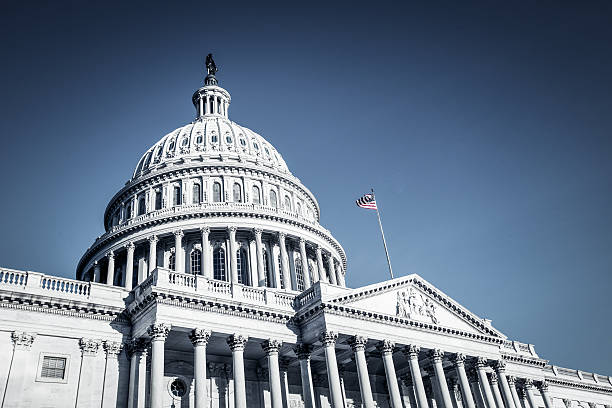The novel coronavirus (COVID-19) crisis has touched so many lives, both with illness and hardship. In response to this crisis, our office is working remotely on all accounting, and tax projects. The best method to contact us is to email us at [email protected]. We are focused on staying up to date on tax, accounting and finance updates to assist everyone with these challenges.
The tax and financial laws are changing daily, therefore I marked “V1” (version 1) on my memo above. There are various other social service updates, but our memos will focus mainly on finance, business and tax updates.
CONGRESS PASSED HR 6201, FAMILIES FIRST COONRAVIRUS RESPONSE ACT, which is highlighted below. However, this bill hasn’t passed the Senate as of March 17, 2020 at 7 p.m. PST.
Employer tax credits: The Act provides tax credits to employers to cover wages paid to employees while they are taking time of under the bill’s sick leave and family leave programs.
-
- The sick leave credit for each employee would be equal to his wages, limited to $511 per day while the employee is receiving paid sick leave to care for themselves, or $200 if the sick leave is to care for a family member or child whose school is closed. An additional limit applies to the number of days per employee: the excess of 10 days over the aggregate number of days considered for all preceding calendar quarters.
- The family leave credit for each employee is limited to $200 per day with a maximum of $10,000.
- The credits are refundable to the extent they exceed the employer’s payroll tax.
- Employers don’t receive the credit if they’re also receiving the credit for paid family and medical leave in IRC Sec. 45S. These rules apply only to wages paid with respect to the period beginning on a date selected by the Secretary of the Treasury which is during the 15-day period beginning on the date of the enactment of the Act and ending on December 31, 2020. (Act Sec. 7001; Act Sec. 7003)
Comparable credits for self-employed: The Act provides for similar refundable credits against the self-employment tax. It covers 100% of self-employed individual’s sick leave equivalent amount, or 67% of the individual’s sick-leave equivalent amount if they are taking care of sick family member or taking care of a child following the child’s school closing. The sick leave equivalent amount is the lesser of average daily self-employment income, or $51/ day to care for the self-employed individual, or $200 / day to care for a sick family member or child following a school closing.
-
- Self-employed individuals could receive family leave credit for as many as 50 days multiplied by the lesser of $200 or their average self-employment income.
- These rules apply only to days occurring during the period beginning on a date selected by the Secretary of the Treasury, which is during the 15-day period beginning on the date of the enactment of this Act and ending on December 31, 2020.
Employer FICA exclusion: Under the Act, sick leave and family and medical leave paid under the Act will not be considered wages under IRC section 3111(a) (employer tax and disability insurance portion of FICA ; 2%).
VA Note: The seems to mean the employer tax will not be required to be paid on qualified sick leave, family and medical leave, so make sure you inform your payroll processor.
Income Tax Updates as of March 17, 2020:
Federal April 15, 2020 Deadline for Tax Due Payment is extended to July 15, 2020:
-
-
- This change was announced on March 17, 2020 in the afternoon by Treasury Secretary Steven Mnuchin.
- Treasury Secretary Steven Mnuchin announced that taxpayers owing a payment to the IRS may defer the payment for 90 days.
- Individual can defer up to $1MM and Corporations may defer up to $10MM.
- The $1MM limit for individuals was established to cover small businesses and passthrough entities.
- No interest and penalties will be charged on these deferred payments.
- The Treasury Secretary is recommending filing tax returns timely even if you owe money as the taxpayer would still get the payment extension with no interest or penalties as discussed above.
- If you have a refund, you should file timely to get the refund quicker.
VA Note: Please contact us if you have an urgent need for tax returns with refunds.
-
-
- Currently, I’m reading that the tax returns are still due April 15, 2020, but the date for payment of taxes is extended to July 15, 2020. So, at this time, April 15, 2020 extensions are still required to be processed.
- This may change, perhaps they will also add that extensions will not be required, so stay tuned.
- Many details remain unclear with respect to this relief and no official written guidance has been released as of March 17, 2020.
State Tax Filing Guidance for Coronavirus Pandemic:
-
- Some states have enacted some extensions like the Federal / IRS, but much more need to come out. Please see the AICPA Guidance: https://www.aicpa.org/content/dam/aicpa/advocacy/tax/downloadabledocuments/coronavirus-state-filing-relief.pdf
- California: California has extended the due date to file returns and pay tax until June 15, 2020, which includes partnerships which were due on March 15, 2020, but it doesn’t discuss S Corporations, but I’m assuming that is an oversight.
IRS Coronavirus Tax Relief:
-
- Website that doesn’t really provide much information yet. https://www.irs.gov/coronavirus
- IRS Notice 2020-17 is accessible from the link above. This notice is dated March 13, 2020. Some of the highlights are as follows:
- President Trump issued an emergency declaration under the Robert T. Stafford Disaster Relief and Emergency Assistance Act in response to the Coronavirus pandemic (Emergency Declaration).
VA Note: Please consider reviewing your business insurance for any loss of revenue or extra expense reimbursement due to this emergency declaration act. Perhaps this “Emergency Declaration” will allow some coverage.
-
-
- The Emergency Declaration instructed to Secretary of the Treasury “to provide relief from tax deadlines to Americans who have been adversely affected by the OVID-19 emergency pursuant to IRC section 7508A(a). This code section is entitled, “Authority to postpone certain deadlines by reason of Presidentially declared disaster or terroristic or military actions.” Pursuant to IRC section 7508A(a), a period of up to one year may be given. Currently, the relief for tax payments as discussed above is 90 days.
- The relief granted by the Federal government is federal income tax payments due on April 15, 2020.
- The relief provided is available solely with respect to Federal income tax payments (including payments of tax on self-employment income) due on April 15, 2020 in respect of an affected taxpayer’s 2019 taxable year, and federal estimated income tax payments due on April 15, 2020.
VA Note: Our interpretation is April 15, 2020 tax due payments for 2019 tax liabilities and 2020 1st quarter estimated tax payments are provided a 90-day relief, to July 15, 2020. There doesn’t seem to be any extension/relief for other taxes like payroll taxes. However, some employers will find relief related to employer payroll tax as discussed above. As of this current notice, interest and penalties would begin on July 16, 2020.
- SBA Relief/Small Business Loans: Small businesses will probably need cash/financing assistance to get us through this COVID-19 shutdown period. Currently, it seems SBA financial assistance is based on a state by state decision. Let’s discuss the current options
- One can go to https://www.sba.gov/about-sba/sba-newsroom/press-releases-media-advisories/sba-updates-criteria-states-requesting-disaster-assistance-loans-small-businesses-impacted Updates as of March 17, 2020.
- Relaxed criteria will have two immediate impacts:
- Faster, easier Qualification process for states seeking SBA disaster Assistance.
- Expanded Statewide access to SBA Disaster Assistance loans for Small business. SBA disaster assistance loans are typically only available to small businesses within counties identified as disaster areas by a Governor. Under the revised criteria issues on March 17, 2020, disaster assistance loans will be available statewide following an economic injury declaration. This will apply to current and future disaster assistance declaration related to Coronavirus.
- Process for Accessing SBA’s Coronavirus (COVID-19) Disaster Relief Lending:
- SBA is offering designated states ad territories low interest federal disaster loans for working capital to small businesses suffering substantial economic injury as a result of COVID-19. Upon request received from a state’s Governor, SBA will issue under its own authority, Supplemental Appropriations.
- Any such Economic Injury Disaster Loan assistance declaration issued by SBA makes loans available statewide to small businesses and private, non-profit organizations to help alleviate economic injury caused by COVID-19.
- One a declaration is made, the information on the application process for Economic Injury Disaster loan assistance will be made available to affected small businesses within the state.
- The loans may be used to pay fixed debts, payroll, accounts payable and other bills that can’t be paid because of the disaster impact. The interest rate is 3.75% for small businesses and 2.75% for non-profit.
- SBA offers loans with long-term repayments in order to keep payments affordable, up to a maximum of 30 years. Terms are determined on a case-by-case basis, based upon each borrowers’ ability to repay.
- To apply for disaster assistance go to https://www.sba.gov/funding-programs/disaster-assistance
- Need to register
- Need to apply
- COVID 19 / Coronavirus application is “Economic Injury”
- Select your State and County
- Selection Disaster Name which should be Coronavirus.
- You must certify and accept a truthful clause
- You need to accept statement required by EO, which includes information being available for specific reasons.
- Filings Requirements:
- Disaster Business Loan Application
- Need FEIN
- Need insurance information for flood, hazard, or business interruption.
- If you every had a federal loan (like an SBA loan), they will want that information.
- Personal Financial Statements SBA form 413
- Schedule of Liabilities SBA form 2202
- Request for Tax Return transcripts
- Business Tax Returns
- You will need to be prepared with financial and tax information for the application.
Unemployment Options
- This is an option in which a business owner can terminate employees due to some purposes or reason which is based on their state law and employment contracts, like furloughed due to Coronavirus, and the employee would file for state unemployment insurance/income.
Political Discussion / Financial Thoughts:
- I think all of us, as business owners, need to communication with our Congress person and Senator. I think one of the best ways to get money to small business is for the Federal Government to utilize SBA to provide loans to small businesses. The application needs to be streamlined. The loans to small businesses would provide financial help to keep those businesses going. Governments needs to be concerned with borrowers not taking advantage of the program could provide some sort of income tax incentives to the business owner in addition to the ones already passed. Here are my initial thoughts:
- Use SBA to provide disaster loans to small business. I’m sure SBA can get cash to business owners better than Treasury cutting checks to taxpayers.
- The SBA funds can be used to pay employees, rent, loans, utilities and necessary/fixed overhead would be a tax deduction and a refundable tax credit.
- This should provide business owners with an incentive to use the money correctly, because if they don’t, then they will still be on the hook for the loan.
- Profits will most likely be down, and cash spent to keep employees working and businesses paying the bills, should help the economy. These payments, which the IRS can define later, would be a tax deduction and a refundable credit.
- The refundable credit should trigger a tax refund, and that money can be used to pay back the SBA loan.
- If things work out correctly, businesses stay open, employees get paid, employee benefits stay in place, overhead gets paid, and this should help us through this pandemic. Then the IRS could provide tax forms with the 2020 tax returns, in which qualified disaster expenses would be a tax deduction and a refundable credit. The IRS can audit these calculations.
- Refundable credits would provide business owners with cash upon filing tax returns, and thus the refund can be directly applied to SBA loans.
- Refundable credits would also reduce the need or amount for 2020 estimated tax payments.
- Yes, this is going to be an expensive taxpayer assistance package, but we the taxpayers pay the tax, and this time we need help. Based on my quick research, the TARP (Trouble Asset Relief Program) cost the taxpayers around $40 billion. Congress MUST act to save the US economy. Allowing the banks and small business to help should make the process easier.
- If a financial assistance program isn’t provided, I expect employees will be laid off and businesses will go out of business. Loans won’t be paid, landlords won’t be paid, etc. It would be a ripple effect.
- I recommend everyone contact their Congress person and / or Senator to such a strategy similar to the above. Business owners don’t want to go into debt to keep the doors open.
- Hopefully this process or something similar will keep the economy sustained and reduce the chances of uprising. If people can’t work to earn money, they need a process to pay for food, housing, and bills. Plus, this should create an incentive for people to abide by the disaster request/requirements.











